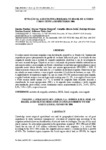Por favor, use este identificador para citar o enlazar este ítem:
http://www.alice.cnptia.embrapa.br/alice/handle/doc/907251Registro completo de metadatos
| Campo DC | Valor | Lengua/Idioma |
|---|---|---|
| dc.contributor.author | PAULINO, J. | pt_BR |
| dc.contributor.author | FOLEGATTI, M. V. | pt_BR |
| dc.contributor.author | ZOLIN, C. A. | pt_BR |
| dc.contributor.author | SÁNCHEZ-ROMÁN, R. M. | pt_BR |
| dc.contributor.author | JOSÉ, J. V. | pt_BR |
| dc.date.accessioned | 2011-11-25T11:11:11Z | pt_BR |
| dc.date.accessioned | 2011-11-25T11:11:11Z | pt_BR |
| dc.date.available | 2011-11-25T11:11:11Z | pt_BR |
| dc.date.available | 2011-11-25T11:11:11Z | pt_BR |
| dc.date.created | 2011-11-25 | pt_BR |
| dc.date.issued | 2011 | pt_BR |
| dc.identifier.citation | Irriga, Botucatu, v. 16, n. 2, p. 163-176, abril-junho, 2011. | pt_BR |
| dc.identifier.uri | http://www.alice.cnptia.embrapa.br/alice/handle/doc/907251 | pt_BR |
| dc.description | Resumo: O conhecimento das áreas irrigadas e sua distribuição geográfica no Brasil é de fundamental importância para o planejamento da gestão de recursos hídricos do país. A evolução da área irrigada de acordo com o método de irrigação possibilita identificar o uso de tecnologias de uso mais racional da água. Objetivou-se com a realização do presente trabalho sistematizar as informações sobre a área irrigada no Brasil e identificar os métodos que apresentaram a maior expansão nessa última década, com base nos censos agropecuários 1995/1996 e 2006. O Brasil apresenta atualmente uma área de 4,45 milhões de hectares irrigados. Observou-se que em relação ao censo anterior, a área irrigada aumentou 1,3 milhões de hectares, ou seja, 42%. A regiãoSudeste ultrapassou a região Sul, que no censo 1995/96 possuía a maior área irrigada, a região Nordeste ocupa o terceiro lugar neste ranking com 22,12%, já as regiões Centro-oeste e Norte somam juntas apenas 14,7 %. O método de irrigação mais utilizado segundo a classificação do censo agropecuário 2006 é o de aspersão (sem considerar o pivô), seguido pela inundação, pivô central, outros, localizada e sulco, representando 35,3%, 24,4%, 18,9%, 8,3%, 7,4% e 5,8%, respectivamente. Abstract: Knowledge about irrigated agricultural area and its geographical distribution are of great importance to water resources management. Evolution of irrigated area according to the irrigation method allows an identification of rational water technologies. The aim of this work was to analyze the information presented in the agricultural census of 1995/1996 and of 2006. Brazil has an area of 4.45 million cultivated hectares with irrigation. It is noticed that according to the 1995/1996 census, the irrigated area increased 1.3 million hectares, a growth of 42%. The Southeast region surpasses the South region which had, in 1995/96, the largest irrigated area. The Northeast region is the third irrigated agricultural area with 22.12 %, while the Central-west and the Northern region together sum 14.7%. According to the agricultural census 2006 classification, sprinkler irrigation (without center pivot) method is the most used, followed by flood, center pivot, other methods, drip and furrow, representing 35.3%, 24.4%, 18.9%, 8.3%, 7.4% and 5.8%, respectively. | pt_BR |
| dc.language.iso | por | pt_BR |
| dc.rights | openAccess | pt_BR |
| dc.subject | Área irrigada | pt_BR |
| dc.subject | Brasil | pt_BR |
| dc.title | Situação da agricultura irrigada no Brasil de acordo com o censo agropecuário 2006. | pt_BR |
| dc.type | Artigo de periódico | pt_BR |
| dc.date.updated | 2011-11-25T11:11:11Z | pt_BR |
| dc.subject.thesagro | Irrigação | pt_BR |
| dc.subject.thesagro | Agricultura | pt_BR |
| dc.subject.thesagro | Estatística | pt_BR |
| riaa.ainfo.id | 907251 | pt_BR |
| riaa.ainfo.lastupdate | 2011-11-25 | pt_BR |
| dc.contributor.institution | JANAINA PAULINO, ESALQ; MARCOS VINICÍUS FOLEGATTI, ESALQ; CORNELIO ALBERTO ZOLIN, CPAMT; RODRIGO MÁXIMO SÁNCHEZ-ROMÁN, UNESP; JEFFERSON VIEIRA JOSÉ, UNESP. | pt_BR |
| Aparece en las colecciones: | Artigo em periódico indexado (CPAMT)  | |
Ficheros en este ítem:
| Fichero | Descripción | Tamaño | Formato | |
|---|---|---|---|---|
| 2011AP16.pdf | 574.92 kB | Adobe PDF |  Visualizar/Abrir |









